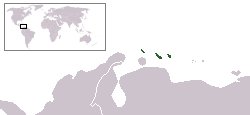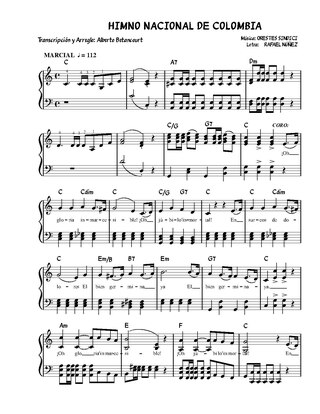
The Netherlands Antilles was a constituent country of the Kingdom of the Netherlands. The country consisted of several island territories located in the Caribbean Sea. The islands were also informally known as the Dutch Antilles. The country came into being in 1954 as the autonomous successor of the Dutch colony of Curaçao and Dependencies. The Antilles were dissolved in 2010. The Dutch colony of Surinam, although relatively close by on the continent of South America, did not become part of the Netherlands Antilles but became a separate autonomous country in 1954. All the island territories that belonged to the Netherlands Antilles remain part of the kingdom today, although the legal status of each differs. As a group they are still commonly called the Dutch Caribbean, regardless of their legal status. People from this former territory continue to be called Antilleans in the Netherlands.

Curaçao, officially the Country of Curaçao, is a Lesser Antilles island in the southern Caribbean Sea and the Dutch Caribbean region, about 65 km (40 mi) north of the Venezuela coast. It is a constituent country of the Kingdom of the Netherlands. Together with Aruba and Bonaire, it forms the ABC islands. Collectively, Curaçao, Aruba, and other Dutch islands in the Caribbean are often called the Dutch Caribbean. It is the largest of the ABC islands in both area and population as well as the largest of the Dutch Caribbean.

Bonaire is a Caribbean island in the Leeward Antilles, and is a special municipality of the Netherlands. Its capital is the port of Kralendijk, on the west (leeward) coast of the island. Aruba, Bonaire and Curaçao form the ABC islands, 80 km off the coast of Venezuela. Unlike much of the Caribbean region, the ABC islands lie outside Hurricane Alley. The islands have an arid climate that attracts visitors seeking warm, sunny weather all year round. Bonaire is a popular snorkeling and scuba diving destination because of its multiple shore diving sites and easy access to the island's fringing reefs.

The national anthem of Bolivia, also known as "Bolivianos, el Hado Propicio" and originally titled the "Canción Patriótica", was adopted in 1851. José Ignacio de Sanjinés, a signer of both the Bolivian Declaration of Independence and the first Bolivian Constitution, wrote the lyrics. The music was composed by an Italian, Leopoldo Benedetto Vincenti.
The "National Anthem of Honduras" was adopted by presidential decree 42 in 1915. The lyrics were written by Augusto Constantino Coello and the music composed by Carlos Hartling.

Papiamento or Papiamentu is a Portuguese-based creole language spoken in the Dutch Caribbean. It is the most widely spoken language on the Caribbean ABC islands.

The "Paraguayan National Anthem" is the national anthem of Paraguay. The lyrics were written by Francisco Acuña de Figueroa under the presidency of Carlos Antonio López, who at the time delegated Bernardo Jovellanos and Anastasio González to ask Figueroa to write the anthem.

Gilberto François "Betico" Croes was an Aruban political activist who was a proponent for Aruba's separation from the Netherlands Antilles. This eventually occurred in 1986, but following a car accident on 31 December 1985, Croes lapsed into a coma and never became conscious to see his accomplishment. He is best remembered as "Libertador" (liberator) and as the father of the Aruban people.

Kralendijk is the capital city and main port of the island of Bonaire in the Caribbean Netherlands. The language spoken in the town is Papiamentu, but Dutch and English are widely used. As of 2017, the town had a population of 10,620. In Papiamentu, the town is often called Playa or "beach".
The Anthem of Curaçao is the national anthem of Curaçao. Officially adopted on 26 July 1978, it consists of four verses, although only the first and last are commonly sung. Its theme is best summed up by the first stanza, praising the grandeur of Curaçao, as small as the island may be.

Rincon is one of the two towns in Bonaire, a special municipality of the Kingdom of the Netherlands. It is situated in the north of the island in an inland valley.

The "Himno de Canarias", also known as the "Arrorró" ("Lullaby"), is the official anthem of the Canary Islands, Spain. The song was composed by Teobaldo Power. It was adapted as the community's anthem and incorporated as such on 30 May 2003.
Papiamento has two standardised orthographies, one used on the island of Aruba and the other on the islands of Curaçao and Bonaire. The Aruban orthography is more etymological in nature, while the other is more phonemic. Among the differences between the two standards, one obvious difference is the way the name of the language is written. In Aruba it is written Papiamento, while in Curaçao and Bonaire it is written Papiamentu. The governments of Curaçao and Aruba formally standardised orthographic rules in 1976 and 1977, respectively.

The Caribbean Netherlands is a geographic region of the Netherlands located outside of Europe, in the Caribbean, consisting of three so-called special municipalities. These are the islands of Bonaire, Sint Eustatius and Saba, as they are also known in legislation, or the BES islands for short. The islands are officially classified as public bodies in the Netherlands and as overseas territories of the European Union; as such, European Union law does not automatically apply to them.

The "National Anthem of the Republic of Colombia" is the official name of the national anthem of Colombia. It was originally written as a poem in 1850 by future President Rafael Núñez as an ode to celebrate the independence of Cartagena. The music was composed by Italian-born opera musician Oreste Síndici, at the request of Bogotan actor José Domingo Torres, during the presidency of Núñez, and with lyrics refined by Núñez himself, it was presented to the public for the first time on 11 November 1887. The song became very popular and was quickly adopted, albeit spontaneously, as the national anthem of Colombia.

Joceline Clemencia was an Afro-Curaçaoan writer, linguist, feminist and independence activist. She advocated for the Creole language spoken in Curaçao, Papiamento, to become an official language and was successful in the struggle, having created both language schools and texts to further its cultural significance. She was in favor of full independence of Curaçao from the Netherlands.

"Golden Rock" is the regional anthem of Sint Eustatius, which was established by the Island Council on July 29, 2004, and was officially ratified on October 8, 2010. The anthem was composed by Pieter A. van den Heuvel.

Ernesto Otilio "Netto" Petronia was an Curaçao-born Aruban businessman and politician. He served many times as a minister with multiple portfolios, and was Prime Minister of the Netherlands Antilles from 1969 until 1971.














